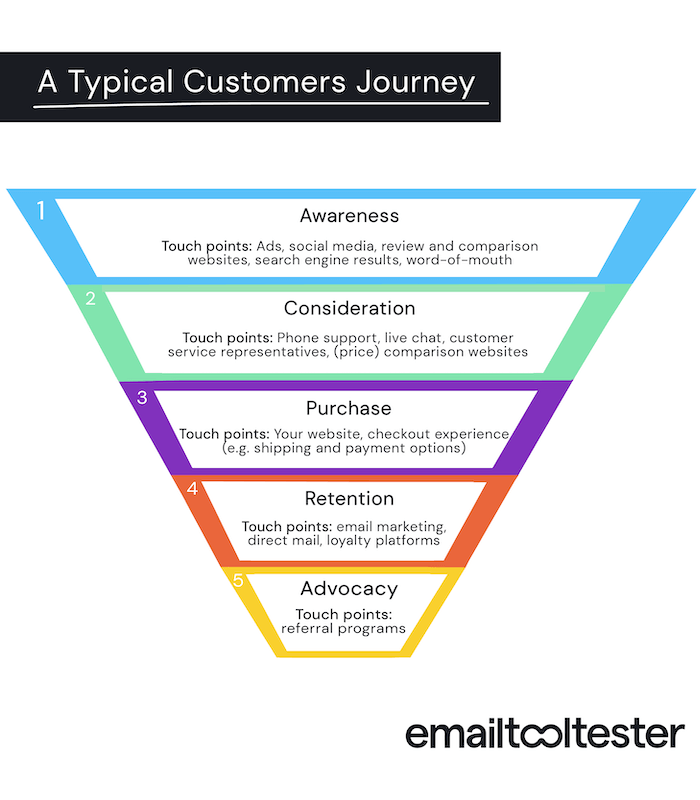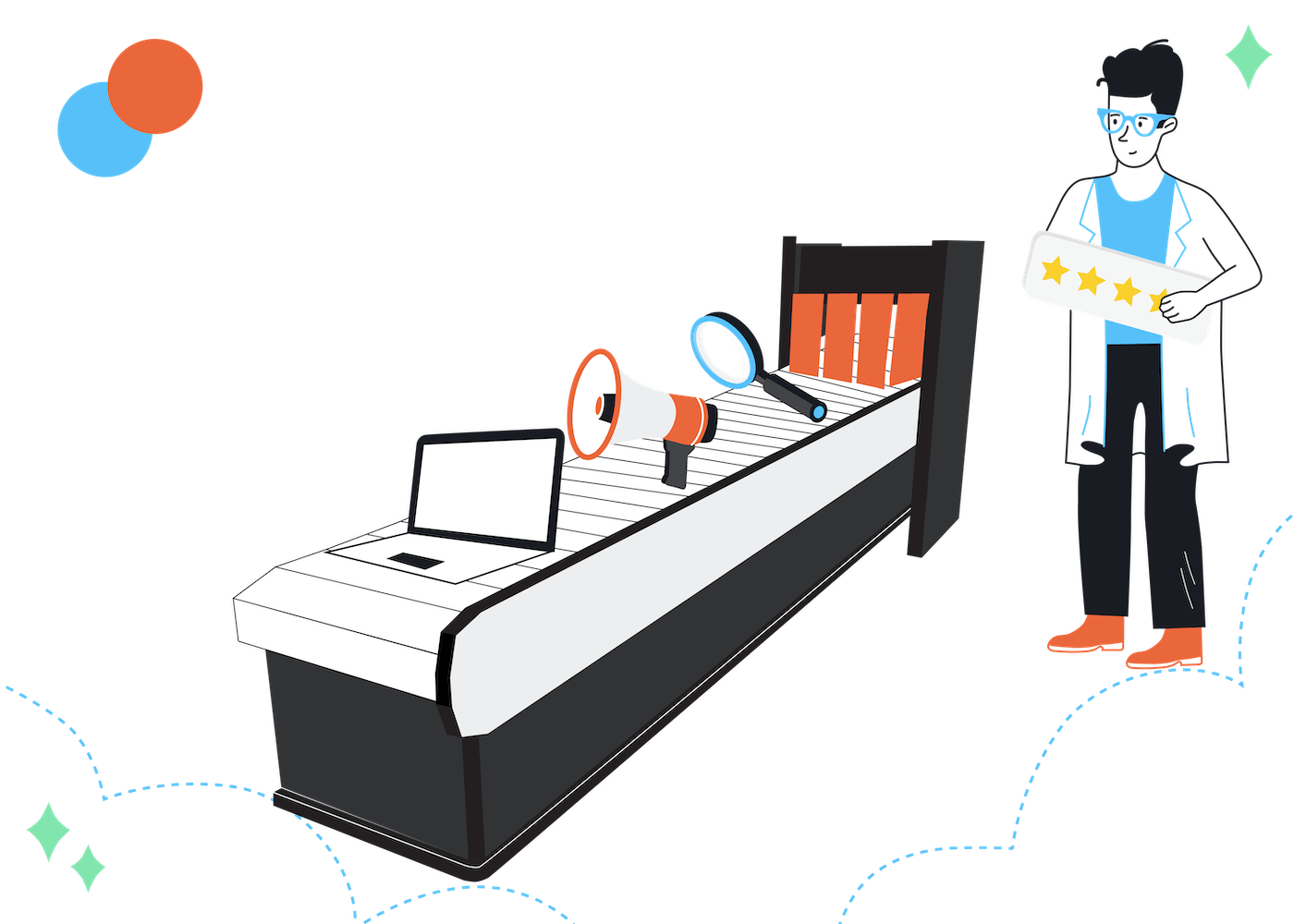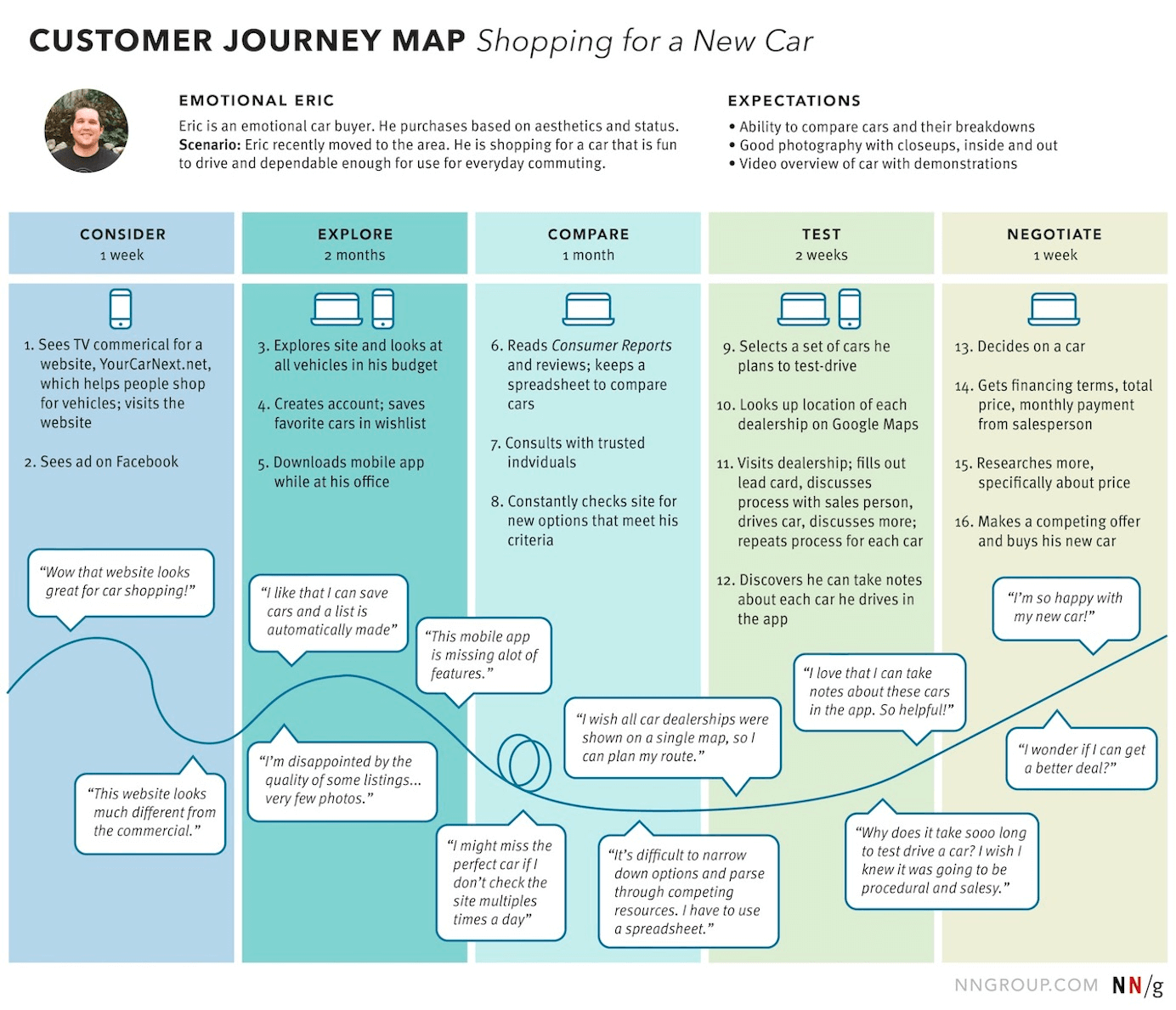Do you ever wonder how customers perceive and interact with your brand? Understanding the customer journey is a crucial aspect of delivering exceptional customer experiences.
With competitors that are only a mouse-click away, it’s more important than ever to ensure that your business is meeting and exceeding your customer’s expectations.
In this blog post, I’ll take you through all the buyer's journey stages, how to map them, and how to utilize data to create an outstanding experience for your customers.
Understanding the Customer Journey
The customer’s journey is an essential aspect of business success, as it represents the entire experience a customer has with a brand when they purchase a product or service.
This journey starts with discovery and continues through research, understanding, comparison, and ultimately the buying process, which can lead to repeat purchases for satisfied customers.
By comprehending the stages a buyer passes through, you can meet customer needs, boost efficiency, and visualize the entire process through customer journey maps.
These maps focus on how customers interact with the brand, providing valuable insights that can help you make practical decisions and strategies to ensure the journey runs smoothly.
So, how can you break down the customer journey into more manageable stages?
The Five Key Stages of the Customer Journey

The 5 stages of a customer journey
The customer journey consists of five key stages:
- Awareness
- Consideration
- Purchase
- Retention
- Advocacy
Each stage plays a crucial role in guiding customers from one stage to the next.
In the following sections, we’ll delve into each of these stages and provide insights on how to optimize them for improved customer satisfaction and business growth.
1. Awareness Stage
The awareness stage is the first step in the buyer's journey, where potential customers first learn about a brand or its products or services. It's essentially the stage of discovery.
During this stage, marketing efforts are crucial to creating visibility for the brand. Potential customers might encounter the brand through various channels, such as digital ads, social media, search engine results, word-of-mouth recommendations, or even offline advertising like print media or billboards.
For complex products or services, for example in a B2B environment, the awareness stage is also when prospective customers often begin conducting initial research to better understand the offering. They may read blog posts, news articles, expert and user reviews (like the ones you can find on EmailTooltester), or seek information from online forums, discussions and experienced people.
The brand's focus should be on creating a strong and positive initial impression, providing clear and accessible information about their offerings, and starting to build trust and credibility with the potential customer.
Ultimately, the goal is to move these prospective customers into the next phase of the customer journey – the consideration stage.
2. Consideration Stage
The consideration stage is when customers are researching and comparing different brands before making a final decision. During this stage, customers typically look into specific brands and products, weigh their options, and evaluate their priorities.
To stand out from the competition, you should engage with customers through various channels (e.g. phone support, live chat, customer service representatives) and ensure that their user experience is top-notch.
User experience in the consideration stage is crucial because it allows businesses to refine key touchpoints like e-commerce transaction and description pages based on feedback. By focusing on delivering a seamless and enjoyable experience, you can effectively differentiate yourself from competitors and leave a lasting impression on potential customers.
To further engage customers during the consideration stage, you can leverage technology to offer personalized and relevant content, addressing customer needs, and emotions.
By tailoring marketing strategies based on real-time insights and adopting an omnichannel marketing approach, businesses are in a position to significantly improve the customer experience. Omnichannel marketing ensures a consistent and integrated experience across all customer touchpoints – whether online or offline, all with the goal of moving them into the purchase stage.
3. Purchase Stage
The purchase stage is when customers decide to buy your brand. During this stage, you should ensure a seamless transaction process and offer incentives to encourage customers to make the purchase.
One common issue that ecommerce businesses face during the purchase stage is cart abandonment, which can be caused by factors such as hidden shipping costs, additional taxes, or a complex checkout process.
To enhance the customer experience during the purchase stage, businesses can provide multiple payment options and offer customer service assistance during checkout (e.g. via live chat). By addressing these potential pain points, you can increase the likelihood of customers completing their purchases and becoming loyal customers.
Offering incentives like discounts or free shipping during the purchase stage can boost conversions and enhance brand loyalty. However, ensure these promotions align with your brand to avoid long-term drawbacks. Consistently offering discounts can condition customers to always wait for these sales before buying. For example, customers, who came solely for the initial discount, may never reach the crucial stage of retention.
4. Retention Stage
The retention stage is when customers have bought a product or service and remain loyal to the brand, rather than switching to another provider. During this stage, businesses should focus on keeping customers satisfied and maintaining a positive relationship, which can be aided by using a CRM (customer relationship software).
By optimizing the transaction experience and staying on top of your competition’s strategies, you can improve customer retention and foster brand loyalty. Email marketing also allows businesses to monitor customer engagement and gather useful data for future strategies.
These email marketing strategies include targeted email marketing (using segmentation strategies for example), providing a direct line of communication and delivering personalized content, new product updates, and exclusive offers to foster connection.
Having loyal customers is highly advantageous for businesses, as they are 50% more likely to try out new products and spend 31% more than new customers (sidenote: this plausible number is passed around on countless websites who link to each other, but no one seems to know where it first appeared 🤔).
To maintain customer satisfaction during the retention stage, businesses should focus on providing excellent customer service and addressing any issues or concerns promptly. In addition to exceptional customer service, you should use customer feedback to identify areas for improvement and tailor their offerings to better meet customer needs.
One effective way to foster customer advocacy is by implementing a loyalty program that rewards referrals and future transactions. By offering incentives for customers to share their positive experiences and refer friends and family, businesses can further strengthen their relationships with existing customers and attract new ones.
By continuously refining their products and services, businesses can cultivate a loyal customer base who ideally become vocal advocates for your brand. This brings us to the Advocacy stage.
5. Advocacy Stage
The retention and advocacy stages are crucial in a customer’s journey with a brand. The advocacy stage is when satisfied customers become brand ambassadors, sharing their positive experiences and promoting the brand to others.
This stage can significantly contribute to the acquisition of new customers. To encourage customer advocacy, you can reach out to customers with a friendly and supportive attitude, demonstrating that they genuinely care about their experiences. Additional strategies include referral or affiliate programs that offer rewards to existing customers for bringing in new patrons.
Handling negative reviews during the advocacy stage is also crucial. By proactively addressing criticism and highlighting praise, you can demonstrate your commitment to customer satisfaction and maintain a positive reputation in the eyes of both current and potential customers.
Creating a Customer Journey Map
Customer journey map for a car purchase (Source)
Creating a customer journey map provides a visual representation of the customer experience, helping businesses identify pain points and opportunities for improvement across all stages of the journey. In the example image, you see the buyer's journey for a car purchase.
In the next sections, we’ll discuss the benefits of customer journey mapping and provide a step-by-step guide on how to create your own map.
Benefits of Buyer Journey Mapping
Customer journey mapping offers numerous benefits for businesses, including a better understanding of customer emotions and the ability to identify areas for improvement. By visualizing the entire journey, you can gain valuable insights into how your customers interact with your brand, allowing them to make informed decisions and tailor their strategies accordingly.
Another advantage is the ability to increase customer satisfaction. By identifying potential pain points and areas for improvement, you can optimize the customer journey and ensure a seamless and enjoyable experience for your customers.
Lastly, customer journey mapping can help businesses streamline their processes and boost efficiency. By visualizing the entire customer journey, you can identify redundancies or bottlenecks in your processes and make the necessary adjustments to improve your overall customer experience. For example, our car manufacturer notices that the Google Maps profiles of its branches do not offer an appointment booking option. Often, it is small details that stand in the way of test drives or even purchases.
Steps to Create a Customer Journey Map
Creating a customer journey map involves several steps, including gathering data, developing customer personas, mapping touchpoints, and analyzing customer interactions.
The first step is to collect relevant data, such as customer demographics, preferences, and behavior patterns. This information can be obtained through various sources, including customer surveys, social media, and website analytics.
Next, businesses should develop customer personas, which are fictional representations of their target audience. These personas help you better understand your customers’ needs, emotions, and motivations, allowing you to tailor their strategies and offerings accordingly.
Once customer personas have been established, you can map out the various touchpoints, or moments when customers form an opinion of the brand.
Finally, you should analyze customer interactions at each touchpoint to identify areas for improvement and optimize the customer journey.
By continually refining their processes and offerings, you can ensure that your customers enjoy a seamless and enjoyable experience, leading to increased satisfaction and loyalty.
Enhancing the Customer Experience Through Technology
Technology, such as artificial intelligence (AI) and personalization tools, can significantly enhance the customer experience by delivering more targeted and relevant content. By leveraging advanced technologies, you can gain a deeper understanding of your customers and provide personalized experiences that resonate with their unique needs and preferences.
ChatGPT, for example, can help you analyze and profile customer data using the Code Interpreter feature.
In addition to AI and personalization tools, you can also utilize digital platforms to improve the customer experience. For example, healthcare brands are using digital HCP engagement platforms to share stories and information at each stage of the journey, fostering a more connected and engaging experience.
By embracing technology and incorporating it into the customer journey, businesses can provide a more personalized and enjoyable experience for their customers, ultimately leading to increased satisfaction and loyalty.
Summary
In conclusion, understanding the customer journey and its various stages is crucial for businesses to deliver exceptional customer experiences and foster long-term loyalty.
By utilizing customer journey mapping, data and analytics, technology, and available resources, you can effectively identify pain points and opportunities for improvement, ultimately enhancing the overall customer experience and driving growth.
Remember, the key to a successful buyer's journey lies in constantly refining your processes and offerings to meet and exceed customer expectations.
FAQ
Journey mapping is a visual tool used to understand how customers interact with a product or service, identify any barriers, and gain insight into their experience.
Through this process, user personas are created and the necessary functionalities that an audience needs can be determined.
Businesses can engage with customers through multiple channels and ensure a seamless user experience to improve the customer experience during the consideration stage.
This can be done by providing personalized content, offering discounts, and providing customer support. Additionally, businesses can use social media to engage with customers and build relationships.
By leveraging these channels, businesses can leverage these channels.
Customer journey mapping helps businesses gain insight into customer experience, identify areas for improvement, and boost customer satisfaction.
We keep our content up to date
04 Oct 2023 – New infographic added
Our Methodology
This article has been written and researched following our EmailTooltester methodology.
Our Methodology


